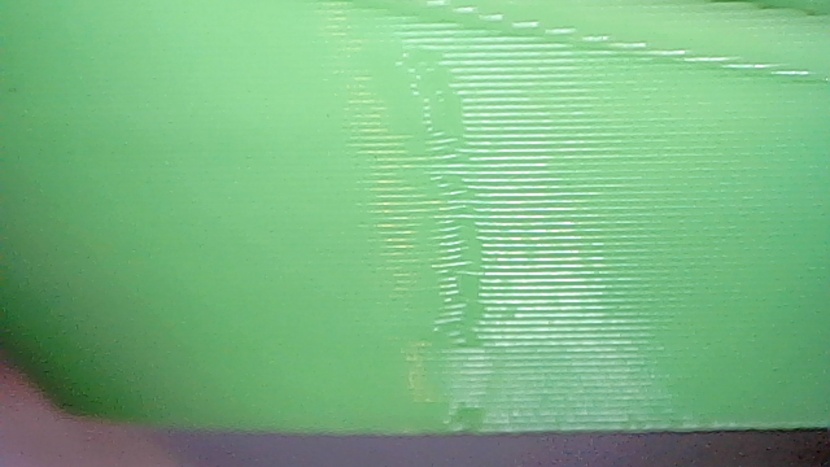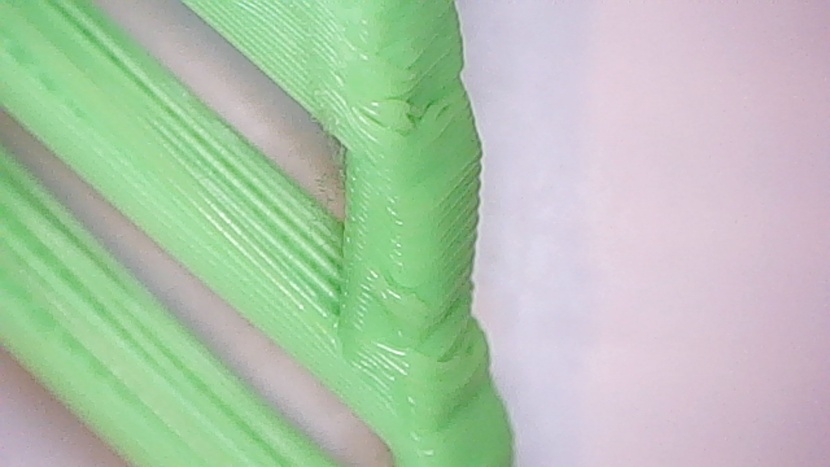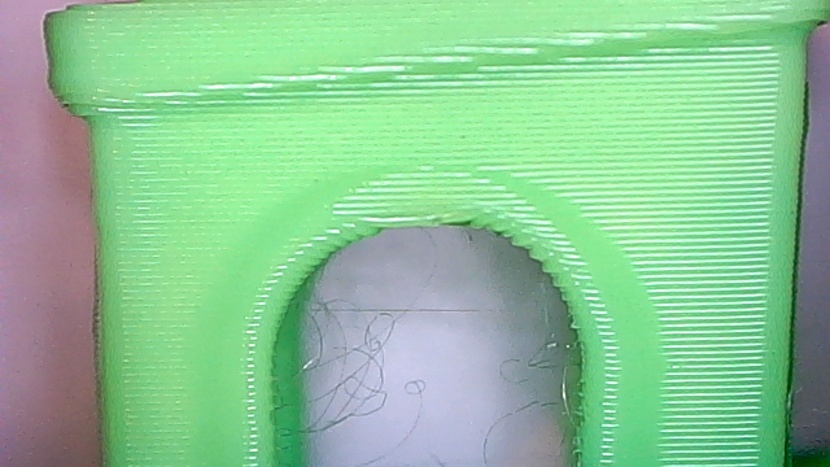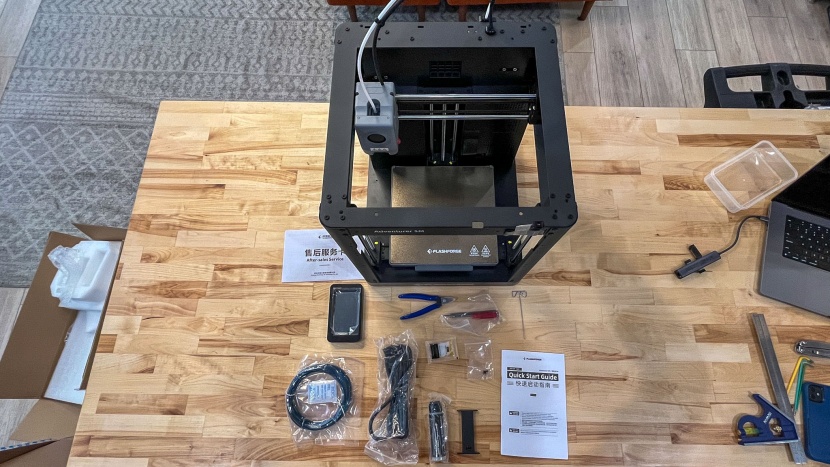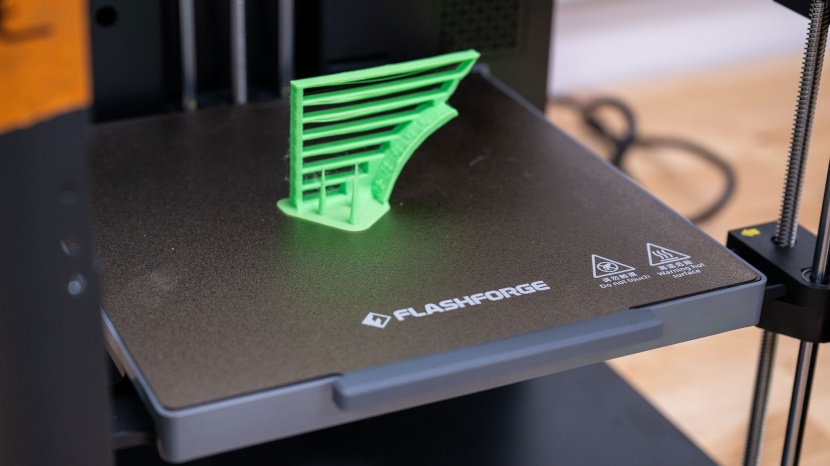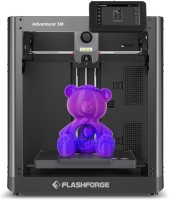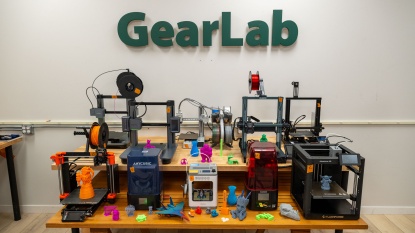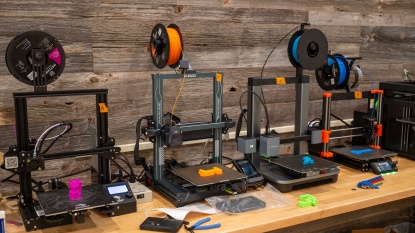
Our Verdict
Our Analysis and Test Results
The Adventurer 5M turned out to be one of the more consistent performers in our tested lineup… consistently midrange. It wasn't a standout in any one metric, but we couldn't find too much to criticize either.
Print Quality
You should know right off the bat that the 5M is pretty average in the most important category. FlashForge clearly focused on attempting to lead the game in print quality at their price point with some key features, but after evaluating our standard run of prints, there were some surprising wins and losses.
The body is built in what they call a 'CoreXY' structure, meaning the Z-direction (up & down) is very stable with four vertical arms, and the print head itself moves in both the X (side to side) and Y (front to back) directions. This can be more stable than the more standard 'gantry-style' designs seen in competitors with two vertical arms and a print bed that handles the Y direction, or even a 'cantilever' design with just one vertical arm. Additionally, FlashForge advertises a 'vibration suppression algorithm' for the extruder. Both of these should theoretically lead to less wobble and tighter wall thicknesses, meaning better surface and print quality overall.
In practice, using standard out-of-the-box settings, we saw all sorts of concerns. For starters, 90° corners, like those seen in our Tower and Cube tests, either turned out too rounded or protruded at an angle much sharper than 90°. Our single-walled vase test showed gaps, flat surfaces with visible waves, and overhangs and angles showing issues at short spans and relatively shallow angles.
On the bright side, we found that clearances and dimension tolerances were much better. The nickel in our Nickel Calibration Test fit nearly perfectly, for example. The fidget spinner test also went well; it was relatively easy to pop the arcs free for good movement. Even better was our support removal test, which showed practically no hint of where the supports were placed.
Ease of Use
A key metric where the 5M does deliver is set up. We spent just 12 minutes setting up the unit, which only required installing the screen, the filament roll holder, and removing a couple of safety screws. Screen prompts guided us through the rest of the process, including a self-leveling bed feature.
The FlashForge software that comes standard with the unit is also quite user-friendly, but we found that it occasionally lost connection with the printer. The connection can be made via Wi-Fi or directly through a USB port.
Print Capabilities
The build volume is pretty middle-of-the-road, at 220mm x 220mm x 220mm (8.66" in X, Y, and Z), but in all honesty, this is plenty big for the typical hobbyist. The slicing software fought us a bit when we attempted to use the full advertised dimensions. We were only able to get a maximum 217mm x 217mm bed print, about 2.71% less than advertised.
The extruder print head is all-metal and has a maximum temperature of 280°C, which means it is capable of printing some of the more exotic filament types. It is also relatively easy to add some walls to the 4-arm, cube-like structure to create a fully enclosed print chamber. This helps regulate the temperature, which is needed for those exotic materials that can be finicky and sensitive to temperature swings during printing. FlashForge also sells an 'official' encasing kit.
We found no issues with the textured PEI print bed, so you don't have to worry about adhesion issues. We were also wowed by the speed the 5M is capable of. This thing is fast, printing our popular Benchy model in a breakneck 26.8 minutes.
Support
FlashForge is a subsidiary of the Zhejiang Flashforge 3D Technology Co., a Chinese company. As far as we could tell, US-based support was limited to their industrial arm. Our email contacts with China were usually returned overnight.
The manual was fairly short and sweet, but we still found it sufficient for what we needed, especially given how easy the 5M was to set up and run. Disappointingly, though, there was a noticeable lack of further support materials online, like videos for repairs or part replacements. We did find a Wiki run by FlashForge, full of additional community-made support, which is helpful.
Should You Buy the FlashForge Adventurer 5M?
For an all-around, decently performing desktop 3D printer, we feel comfortable recommending the 5M. It won't knock your socks off, but it won't let you down, and it is definitively user-friendly. If you're willing to put in the work fine-tuning the slicer settings, this guy could be a printing workhorse for all use cases.
What Other 3D Printer Should You Consider?
Not everyone needs an enclosure-ready frame, or the full build volume found here. The diminutive Entina Tina2, for example, achieves a great value by stripping away many of the bells and whistles, leaving strict functionality. The AnkerMake M5 is a top-tier FDM printer, and the Bambu Lab A1 mini gives users the option to dip their toe into multi-color prints.
| Awards | |
|---|---|
| Price | $399 List Check Amazon (on sale!) |
Overall Score  |
|
| Star Rating | |
| Bottom Line | An all around well performing, fast-focused printer that's user friendly to boot |
| Pros | Fast, stable frame, great touch screen |
| Cons | Suspect print quality, minimal support resources |
| Rating Categories | FlashForge Adventure... |
| Print Quality (40%) | |
| Ease of Use (30%) | |
| Print Capabilities (20%) | |
| Support (10%) | |
| Specifications | FlashForge Adventure... |
| Time to Print a Benchy | 26.80 min |
| Measured Effective Bed Size | 217mm x 217mm |
| Bed Temp Gradient | 2.6° C |
| Maximum Extruder Temperature | 280 C |
| Screen Resolutiuon | N/A |
| Compatible Materials | PLA, PETG, TPU, PLA-CF, PETG-CF, High Speed PLA |
| Build Volume (X x Y x Z) | 220mm x 220mm x 220 mm |
| Overall Size | 14.3" x 15.8" x 17.6" |
| Self Leveling Bed | Yes |



